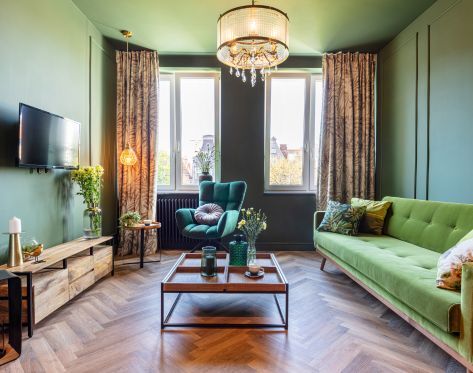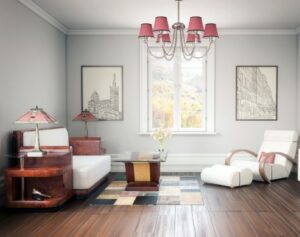Lighting plays a crucial role in interior design, often serving as the unsung hero that sets the mood, highlights architectural features, and enhances the overall aesthetics of a space. It’s an integral element that shouldn’t be overlooked when planning and executing your design vision. In this blog, we will explore the significance of lighting in interior design and how it can transform your living spaces.
Setting the Mood:
Lighting has the power to evoke emotions and create different atmospheres within a room. Whether you desire a cozy and intimate ambiance or a bright and energizing space, the right lighting choices can help achieve your desired mood. Warm, dimmed lights with soft accents can create a relaxing atmosphere, while bright, cool lighting can invigorate and stimulate productivity in workspaces.
Highlighting Design Features:
Well-placed lighting fixtures can draw attention to specific architectural features, intricate ceiling designs, or a stunning art collection. By strategically illuminating these features, you can create visual interest and add depth to your interior design.
Enhancing Functionality:
Good lighting design goes beyond aesthetics—it also serves a practical purpose. Properly lit spaces can enhance functionality, making it easier to perform tasks and navigate through the room. For instance, task lighting in the kitchen ensures clear visibility for cooking, while well-placed lighting in a study area promotes productivity and reduces eye strain. Incorporating a mix of ambient, task, and accent lighting can create a well-rounded lighting scheme that serves both functional and aesthetic purposes.
Creating Visual Balance:
Lighting acts as a tool for achieving visual balance and proportion within a space. It helps define the hierarchy of elements and guides the eye to various focal points. By carefully considering the distribution of light sources, you can ensure that no area feels overly bright or dim. Additionally, balanced lighting can create an illusion of spaciousness, making smaller rooms appear larger and more open.
Adaptability and Flexibility:
With the advancement of technology, lighting systems now offer increased adaptability and flexibility. Smart lighting solutions allow you to adjust brightness, color temperature, and even automate lighting settings to suit different activities or time of day. This versatility enables you to transform the mood and functionality of a space at the touch of a button, providing endless possibilities for creating dynamic and personalized environments.
Conclusion:
Lighting is a vital aspect of interior design that can make or break the overall aesthetic and functionality of a space. It has the ability to shape moods, highlight architectural features, enhance functionality, and create visual balance. By paying attention to the lighting design, you can transform your living spaces into captivating and well-designed havens that cater to your specific needs and desires.
Remember, when planning your interior design, take the time to carefully consider the lighting options available to you. With the right lighting choices, you can illuminate your design vision and bring your space to life.




